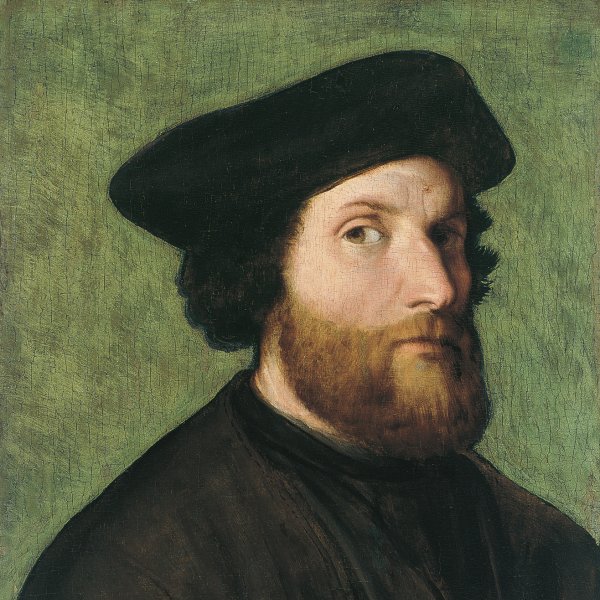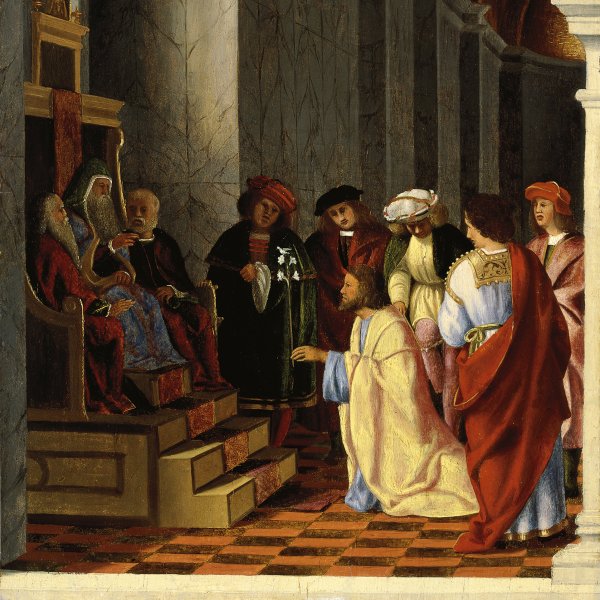Lorenzo Lotto
Lotto is one of the most extensively documented 16th-century painters thanks to his Libro di spese diverse [Account Book], the letters he wrote to the Consorzio della Misericordia Maggiore in Bergamo, and the fact that he signed and dated all his works. Lotto worked in Treviso, The Marches, Bergamo and Venice. He trained in the latter city, possibly in the workshop of Alvise Vivarini or with Giovanni Bellini. He assimilated the style of Giorgione and Titian and of Dürer and Holbein, while his work also reflects the importance of Raphael, with whom he worked in the Vatican. Lotto painted religious and mythological compositions but it was his portraits that were particularly celebrated. Highly innovative within this genre, Lotto was the first to use the three-quarter format and also introduced variations in the design and composition through the use of a horizontal format. In addition, his portraits focus on the inner character of the sitters and deploy symbols and allegories that are now difficult to interpret. In 1506 he is documented in Recanati where he painted the Polyptych of the Virgin and Child with Saint (Pinacoteca Comunale, Recanati). In 1508, summoned by Pope Julius II, Lotto left for Rome to work in the Vatican. In 1513 he painted the Pala Martinengo for the church of San Bartolomeo and also executed a fresco cycle for the Suardi Oratory in Trescore and the Saint Anthony Altarpiece for the church of SS. Giovanni e Paolo in Venice. Lotto also produced portraits and small-format works for private clients such as the Portrait of Andrea Odoni (Royal Collection, Hampton Court, UK).






